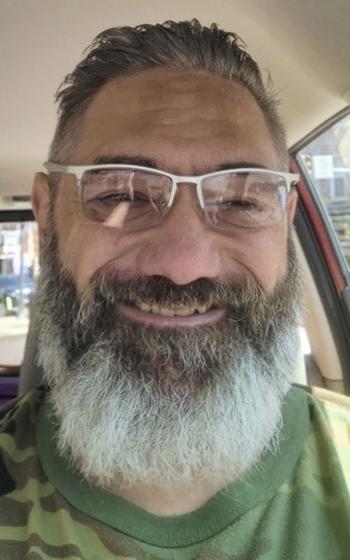
Veterans can get emergency medical exams with a Department of Veterans Affairs nurse under a new program that aims to keep patients out of non-VA emergency rooms and urgent care centers for treatment of medical problems that require immediate attention. (Stars and Stripes)
WASHINGTON — Veterans can get quicker emergency medical exams with a Department of Veterans Affairs nurse under a new program that aims to keep patients out of non-VA emergency rooms and urgent care centers for treatment of medical problems that require immediate attention.
The VA is rolling out a telehealth emergency care program nationwide that will connect veterans using their cellphones with a VA triage nurse who evaluates their problem and directs them to appropriate care, VA Secretary Denis McDonough said.
Veterans can receive an immediate video evaluation, instructions on how to manage minor injuries and illnesses at home and receive follow-up appointments for tests and visits with a provider, the VA said.
The initiative, which follows a pilot program with more than 61,000 veterans, is to counter a shift by an increasing number of veterans to get their emergency care at non-VA hospitals and walk-in urgent care centers, the VA said.
More than one-third of veterans and their dependents obtain emergency care at non-VA health facilities at a cost to the VA that tops $6 billion per year, the VA said.
Costs by the VA to cover community care are projected to rise more than 13% in 2025, as the agency faces a $12 billion shortfall, staffing shortages and criticism by lawmakers about budget management.

Marine Corps veteran David Seward, 53, of Pennsylvania said he used an urgent care center after breaking his thumb in 2023. Seward said he is not certain how the VA’s telehealth program would have changed his situation because there were no radiologists available at the Pittsburgh VA Medical Center to help him. (David Seward)
Marine Corps veteran David Seward, 53, of Pittsburgh said he was directed to non-VA community care in 2023 after he broke his thumb in a woodworking accident at home.
He said he contacted the Pittsburgh VA Medical Center, which told him to use a local urgent care center because there were no radiologists to read X-rays needed to diagnose his injury.
“I was told that they could not get me in to see a radiologist,” said Seward, a former lance corporal who served in 1990 and 1991 at Marine Corps Recruit Depot Parris Island, S.C., and Camp Geiger, N.C. “They said, ‘Go to an urgent care center and send us the records when you’re done.”
Seward drove to the urgent care center.
“I was seen right away and showed them my VA card, which they submitted right to the VA,” he said. “I did not have to pay a dime for service.”
Nearly 4 million veterans used emergency rooms and urgent care centers in their communities from 2017 to 2023, with the numbers projected to keep rising.
The VA is counting on the convenience of the telehealth emergency care program to compete with the popularity of non-VA health care that veterans can access in their communities.
“Sometimes, you’re not sure whether what you’re experiencing is a minor emergency or not — and tele-emergency care can help you resolve those questions,” Shereef Elnahal, VA undersecretary for health, said last week at a news conference.
Veterans can call to connect with a clinical triage nurse who evaluates them. Veterans might be advised on how to care for their medical problem at home. Their call also might be routed to a clinician for a video consultation. They could also get appointments for follow-up tests or a visit with their primary care doctor.
A nurse could also contact 911 on their behalf for immediate help in cases of life-threatening emergencies. Elnahal said about 60% of calls can be resolved using the phone service.
Seward said he is not certain how his care would have been different by using the emergency telehealth program. But he did worry that the process could slow down the time it takes to get care in situations like his when he needed in-person treatment for a painful injury.
“My thumb was swollen, painful and black and blue,” he said. “This sounds like another layer of bureaucracy.”
Some lawmakers have been demanding solutions as the use of community care shifts spending away from VA hospitals and clinics, where there are staffing shortages.
“This is not sustainable,” Sen. Jon Tester, D-Mont., chairman of the Senate Veterans’ Affairs Committee, said at a committee hearing in the spring that examined the rapid rise of non-VA community care, which more than doubled from 2017 to 2023.
Under the Mission Act, which became law in 2018, veterans can seek private care in their communities when they cannot access the VA medical care that they need close to home and in a timely manner.
Lawmakers are expected to address the VA’s $12 billion budget shortfall when they return after the November election.
The VA’s request for funds was not included in a stopgap spending measure that Congress passed last week, though lawmakers did adopt an emergency measure to cover a $3 billion shortfall for 2024.